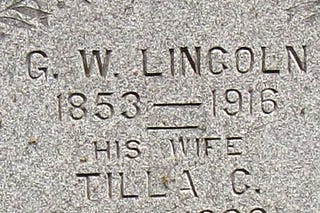Military Records and Resources in the U.S.
In my recent family visit, going through things that my late aunt had secreted away, my mother and I discovered my grandfather’s discharge records from the U.S. Army. Talking with a fellow DAR member this weekend, she noted the difficulties locating Air Force records. The discussion then turned to the fact that the time period she was looking for probably involved Army records, as it was the Army Signal Corps prior to the founding of the Air Force as a branch of the U.S. military in 1947. Could it be she was looking in the wrong place?
This brought me to wondering - if I hadn’t found my grandfather’s records, where would they be? The person I was talking to had tried Fold3, which is associated with Ancestry but dependent on access to the databases and/or public records, but couldn’t find anything.
So I started looking into the accessibility of U.S. records, which means the National Archives. And they do have a page dedicated to researching the branches of the U.S. military.
These branches are: Army, Navy, Marines, Air Force, and Coast Guard. Records from the National Guard require Freedom of Information Act (FOIA) requests and that information is found here at the nationalguard.mil site. The State records office may also be of some assistance as National Guard is a state-level branch.
For the five U.S. military branches, requests need to be made to specific offices depending on the time period the individual served.
From Genealogy Notes, vol. 34, no. 3, Fall 2002:
The two main repositories for records relating to military service are the National Archives and the National Personnel Records Center (NPRC).
The National Archives Building, Washington, D.C., holds records relating to:
Volunteer enlisted men and officers whose military service was performed during an emergency and whose service was considered to be in the federal interest, 1775 to 1902
Regular Army enlisted personnel, serving 1789–October 31, 1912
Regular Army officers, serving 1789–June 30, 1917
U.S. Navy enlisted personnel, serving 1798–1885
U.S. Navy officers, serving 1798–1902
U.S. Marine Corps enlisted personnel, serving 1798–1904
Some U.S. Marine Corps officers, serving 1798–1895
Those who served in predecessor agencies to the U.S. Coast Guard (i.e., the Revenue Cutter Service [Revenue Marine], the Life-Saving Service, and the Lighthouse Service, 1791–1919)
The National Personnel Records Center, St. Louis, Missouri, holds military personnel files of:
U.S. Army officers separated after June 30, 1917, and enlisted personnel separated after October 31, 1912
U.S. Air Force officers and enlisted personnel separated after September 1947
U.S. Navy officers separated after 1902 and enlisted personnel separated after 1885
U.S. Marine Corps officers separated after 1895 and enlisted personnel separated after 1904
U.S. Coast Guard officers separated after 1928 and enlisted personnel separated after 1914; civilian employees of Coast Guard predecessor agencies such as Revenue Cutter Service, Lifesaving Service, and Lighthouse Service, 1864–1919
To request copies of an individual's military personnel file held at the National Personnel Records Center, use a Standard Form 180, "Request Pertaining to Military Records." For more information on what records are available at NPRC and who may request them, consult their web site.
There is also a balance between the Freedom of Information Act and the Privacy Act. So there are specific forms that need to be filed. See the Archives’ information page here (archives.gov site). The requests cannot be made by email due to the Privacy Act of 1974. They must be made in writing (the old-fashioned way). It has to be signed and dated. You also generally have to be related to the person you’re seeking information on, though some public accessibility is granted by the FOIA or if the records are older than 62 years (called an archival request, which can be done online but you have to fax a signature).
Do you have any stories or tips about searching for military records?
Subscribe to GenTales
Lineage and genealogy research













